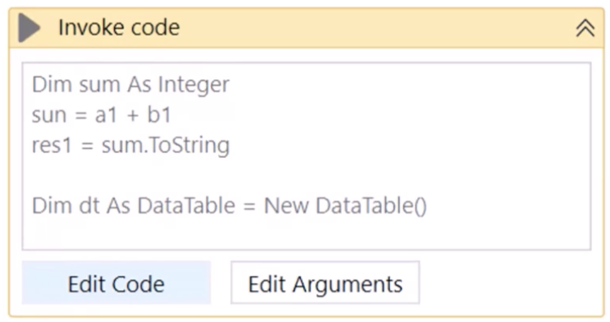UiPath 2017.1 Release: Bringing High Scalability to Large RPA Deployments

Perhaps the best way to introduce UiPath’s new release - 2017.1, is to set the context with a look at why its predecessor - 2016.2, has become the most successful product launch in the company’s history.
Of course, compelling benefits from our technology are a large part of the story: robots-managing-robots with Intelligent Scheduling; on-premises or Cloud multi-tenancy; extensible OCR and so on.
But while our customers have a range of favorite features, there’s a broad consensus that what makes our automation platform so popular isn’t a feature at all. It’s a defining characteristic, which is this: the UiPath RPA Platform delivers the fastest implementation speed in the industry.
Customers have witnessed it in vendor POC comparisons and pilot assessments. The increasing number of customers migrating from other products see it in their new rollouts. With implementation costs typically running 9X license fees, it’s no wonder our RPA velocity is compelling.
Why is it also the context for this release? Because speed is more than features. A precise balance of simplicity and power blends product ease and versatility: developer productivity accelerates - and implementation speed occurs.
This same principle of product design - an exacting balance between simplicity and power - is behind the 2017.1 innovations that address our customer’s newest challenges.
2017 is the Year of Large Deployments
It’s clear from the customer RPA rollouts we’re seeing that 2017 will be remembered as the year of large deployments. To illustrate:
A global insurance customer with 28 robots at the end of 2016 is now at 231 and projects twice that number by the end of this year.
A manufacturer has grown from 64 robots in 2016 to 330 and forecasts more dramatic growth this year.
Two new multinational customers: one in retailing; the other in technology, highlight an emerging trend: companies that move directly from POCs to large rollouts, skipping the customary step of one or more small pilots.
This wasn’t a big surprise. There were signs early last year of customers shaking off pilot mentalities and getting serious about deploying large groups of robots. So, as clients began to put strategies into place for an expansive virtual workforce, our product team revised their multi-year roadmap to meet what those workforces would require.
The 2017.1 Release
When it became clear this would be the year of large deployments, we spoke with customers to learn about new pain points in their burgeoning virtual workforce.
We did learn of three places where the product could be improved for better scaling.
Quicker and simpler robot provisioning to the workforce.
Even faster retrieval of data on robots, queues, schedules and jobs.
More intuitive filters/searches for information, along with more efficient sidebars/icons for configurations and settings.
The silver lining is they correspond to enhancements which were already in development for this release. Specifically:
Orchestrator Scalability & Performance
An illustration of how a balance of simplicity and design enables both scalability and performance can be seen in the new Orchestrator user interface, which makes the management of large virtual workforces quicker and easier.
This complete redesign was implemented using Google Material Design, replacing the table format in 2016.2 with a UI that’s much more intuitive and faster for users to navigate to data, filters, and settings.
Automatic Robot Deployment
In 2017.1, robot deployment steps have been streamlined to create a clean, scalable process.
Now - in just a few clicks - customers can automatically deploy any number of robots to Orchestrator. Orchestrator then immediately licenses and assigns those robots across scheduled work queues to begin their work.
Simplified License Management
License management is an integral part of robot deployments, so we’ve streamlined that process as well to support greater scalability.

Now, customers can simply go to the Setting page on Orchestrator to see license availability and renewal dates, giving them the information they need to keep availability synchronized with demand.
Custom Code Automation with Simplicity & Power
A potent new Studio Activity, “Invoke Code”, is another good example of how the UiPath Platform balances simplicity with the power to create productivity. Results from our Development Lab indicate that custom code can now be implemented 5X faster than before.
Business processes resemble many other areas of work: some are simple; some complex; and others are in between. When processes are complex, it’s not always possible to automate them using only recorders, pre-built activities, wizards and reusable snippets.

The new Invoke Code Activity allows developers to incorporate custom VB.Net code directly into their automation, creating powerful automation solutions without the complications of complexity and size.
Even better - these code solutions can be stored in the Studio Library for reuse by other teams - multiplying the expertise and productivity of your best developers.
Increased Security with CyberArk
Robots executing automations must first open a Windows session. For this to happen, the robot must have access to the username and password. Until now, those Windows login credentials were always encrypted and stored in the Orchestrator database, protected by enterprise grade security.
Now, customers have the option of using a 3rd party credential services provider - CyberArk, seamlessly integrated with Orchestrator, as their credentials repository.
Final Thoughts
To summarize: the 2017.1 milestone in our product roadmap gives our customers the full scalability they’ll need to manage very large numbers of robots. But we recognize that upgrading is a serious decision for existing customers.
With that in mind, UiPath Academy has taken steps to provide your teams with the training and support they’ll need to quickly master and apply all the new features and functionality of the release.
In September, the Academy will roll out a new 40-minute video tutorial, practical exercises, a quiz and access to a training-dedicated instance of Orchestrator 2017.1. The same timeline applies to a new Studio training module that incorporates all the new features.
Our conviction that 2017.1 delivers compelling technology for large deployments is matched by our commitment to provide all the support needed to be successful.
To find out detailed technical information about 2017.1, check the release notes.

Strategic Advisor, Tquila Automation
Get articles from automation experts in your inbox
SubscribeGet articles from automation experts in your inbox
Sign up today and we'll email you the newest articles every week.
Thank you for subscribing!
Thank you for subscribing! Each week, we'll send the best automation blog posts straight to your inbox.



